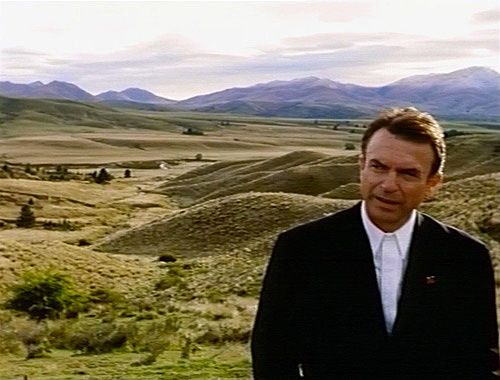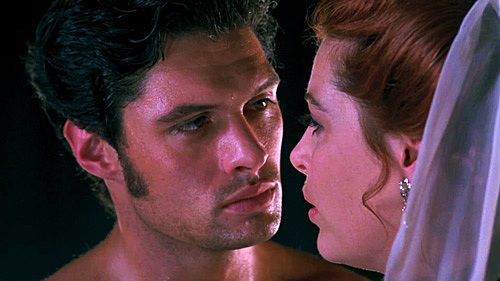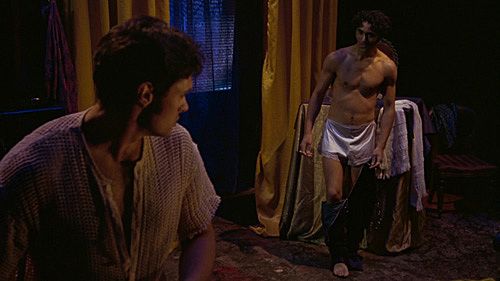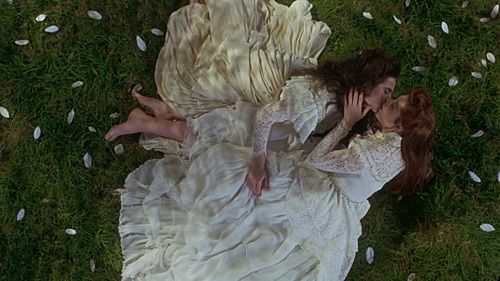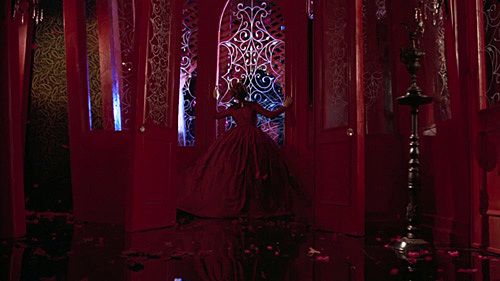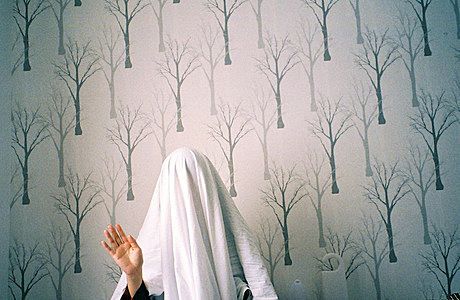A Remedy for History
'Desperate Remedies' (1993) subverts history and masculinity in its radical image of frontier New Zealand
Rightfully restored and set to return to the big screen for one night only, Peter Wells and Stewart Main’s outré melodrama, Desperate Remedies, subverts history and masculinity in its radical image of frontier New Zealand.
An official selection at Cannes in 1993 – the same year The Piano was crowned joint winner of the prestigious film festival’s top prize, the Palme d’Or – Desperate Remedies astonishes today as a miraculous counter-narrative to New Zealand’s established screen identity.
Overshadowed by the success of Jane Campion’s haunting period film at the time (which went on to snag three Oscars), Peter Wells and Stewart Main’s opposing costume melodrama has nonetheless developed a cult following, particularly as a rare instance of homegrown queer cinema. And while that alone is enough to distinguish it from its peers, its striking individuality stems from qualities other than its overt ‘camp’ or ‘flamboyance’ – adjectives routinely used to describe the film by reviewers and publicists alike. Against the grain of our national cinema’s tendency towards dreary, unambiguous realism, Desperate Remedies’ greatest asset may just be its expressionism – and its capacity for reimagining history and artistic tradition through visual and thematic flair.
To understand what makes Desperate Remedies such a radical departure from the status quo is to grasp the many paradigms it sets out to reject. Chief among these is what actor Sam Neill coined as the ‘Cinema of Unease’ in his 1995 documentary on New Zealand film history: a catch-all phrase for the geographical remoteness, violent individualism, and psychological isolation that characterised New Zealand cinema through its formative years and beyond. In films such as Sleeping Dogs (1977), Smash Palace (1982), Vigil (1984), and The Quiet Earth (1985) – all part of a first wave of feature filmmaking in a country whose film industry barely existed prior to the late 1970s – these reoccurring themes emerged as a kind of blueprint for how national identity and consciousness would be symbolised in our movies going forward. Of course, cinema isn’t the only medium capable of articulating this sense of unease; New Zealand’s sublime yet unsettling landscape and its contested spaces have featured in visual art, sometimes problematically, since colonial times, while the ‘man alone’ archetype so pivotal to the New Zealand film renaissance has its origins in literature, principally in the work of John Mulgan and James K. Baxter.
Desperate Remedies, an antidote to the masculine ideal and aesthetic of this commonplace existentialism, surfaced around the same period Jane Campion and Alison Maclean were breaking through with An Angel at My Table (1990) and Crush (1992) respectively. More than privileging female subjectivity, though, it goes much further by subverting the default male image and gaze.
In the opening scenes, set among immigrants gathered on a dock, the central character, Dorothea (Jennifer Ward-Lealand), in search of a ‘man servant,’ surveys a boatload of new arrivals to colonial New Zealand, before locking eyes on the muscular Lawrence Hayes (the late Kevin Smith). In a tantalising exchange of glances scored to the overture of Verdi’s La forza del destino, directors Wells and Main – via a series of longing close-ups from alternating high and low angles – establish a sexual attraction and power dynamic that is unequivocally dictated by the female.
Smith, a perennial tough guy best known internationally for playing Ares, God of War in the TV serials Hercules: The Legendary Journeys and Xena: Warrior Princess, beautifully relinquishes the aura of hardcore masculinity intrinsic to representations of the Kiwi bloke, especially in movies depicting the stoicism of rural or colonial life. As Lawrence he is literally in servitude to Dorothea, hired to marry her opium-addicted sister (Kiri Mills) in order to free her from her former lover and enabler (Cliff Curtis).
In fighting off an unscrupulously profiteer (Michael Hurst), Dorothea is a woman of self-determination, formidable in business and rational in decision making, while Lawrence is outwardly lovesick and at the mercy of his emotions – stereotypically feminine traits. On these terms, much of the action hinges on Dorothea’s manipulation of Lawrence, not only as a subordinate in her best laid plans but as an object of desire, and the film further delivers on its promise of gender role reversal with an abundance of nude male bodies in heat. Wells and Main amp up this eroticism as expected of openly gay filmmakers, and along with the transgressive films of David Blyth (namely, 1978’s Angel Mine), give us fresh perspectives to counter those of the leering straight male – no more outdated in New Zealand cinema than in the image of rugbyheads ogling a stripper in a jockstrap at an after-match function in Carry Me Back (1982).
None of this is conveyed with any subtlety, but then Desperate Remedies isn’t the kind of film to benefit from a more understated approach. And when it comes to rendering history in contrasting tones, why not take it to the nth degree? The film’s broadest stroke is to give agency to the disenfranchised: two women in love, Dorothea and Anne (Lisa Chappell), who, at the risk of spoiling the ending, buck the disturbing ‘Bury Your Gays’ trend by not meeting their demise but living happily ever after.
There’s a similarly pointed critique of patriarchy in Park Chan-wook’s recent film The Handmaiden, which also happens to be a bodice ripper transposed to a culturally specific time and place. The lesbian heroines of Park’s film plot to escape their male oppressors in a highly sexualised atmosphere that, like Desperate Remedies, is easily misunderstood when taken out of historical and social context. (Korean cinema’s constant remodelling of its resistance history under Japanese occupation is part of a wider nationalistic impulse, while the country remains extremely conservative when it comes to homosexuality in both society and media.) In creating a discontinuity with the past – and in the case of The Handmaiden, the present, too – both films raise questions around its ownership and who has the right to revise it. As far as Desperate Remedies is concerned, colonial history is up for grabs.
In the simplest terms, Desperate Remedies’ expressionistic form permits it to boldly and decisively reconstitute New Zealand history. But it also isn’t without its oversights: commenting on the cheap, plentiful land and benign natives advertised to prospective immigrants (as seen on placards on the dock), the film, rather than challenge this 19th-century propaganda, concedes to it. Like a lot of colonial art, Desperate Remedies relegates its Māori figures to the margins – here, an 18-strong cast of background extras according to the credits. Cliff Curtis, who was consigned to the backdrop (or ‘blackdrop’ as he calls it) of The Piano in similar circumstances is actually front and centre of Desperate Remedies as a Māori actor, and yet in a missed opportunity, the ethnicity of his character is left ambiguous (same goes for Kevin Smith, who is of Polynesian descent).
On the other hand, the film unanimously obscures the image of pictorial beauty so inseparable from New Zealand’s profile in everything from painting, to literature, to entertainment and tourism. If its interpretive history fails to adequately address Māori absences in our visual culture as well, it must be said that as a pastiche of cinematic mannerism Desperate Remedies does something unprecedented in highlighting an unrealised artistic heritage. With great affection for old Hollywood spectacle and the baroque style of masters like Josef von Sternberg and Max Ophüls (with allusions to Rainer Werner Fassbinder and Ken Russell as well), Wells and Main, in making a film so devoted to controlled artifice, point to a gaping hole in our cinematic timeline. As the first New Zealand feature shot entirely on a sound stage (by revered cinematographer Leon Narbey) as if it were a classic studio era picture, Desperate Remedies is like a phantom from the past. While the world discovered movies and made them into an industry, as a colonial backwater we could only look on as spectators. It’s this notion of isolation that has fuelled an inferiority complex and yearning to be noticed in New Zealand artists, if not in the psychology of many New Zealand film characters and narratives.
In reclaiming the past, Desperate Remedies rallies against this insecurity. It’s not a hesitant or apologetic work, as aspects of our national character might suggest, and nor is it a history as written by the victors. Lavishly designed on a shoestring budget, its visual panache, intense colour palette, and operatic tempo remind us – especially when held up against the preoccupation with realism that anchors much of contemporary art house cinema – of the potential for art to be euphoric. And looking back on the history of New Zealand cinema, from its nascent years in the 1970s and 80s, to its worldwide acclaim in the 90s, to its perception as a location for outsourcing blockbuster production onwards, it is absolutely a film made on its own terms, bracingly at odds with the open road movies, God’s lonely man thrillers, small town gothic fantasies, and nostalgias for adolescence that have come to define the historical, political, and artistic norms of our film culture.
Excerpts from Desperate Remedies, as well as observations expanded on in this article, feature in Tim Wong’s 2015 documentary Out of the Mist: An Alternate History of New Zealand Cinema.
As of posting, some tickets to the re-premiere at Auckland's Civic Theatre are still available. If you miss out, Desperate Remedies is also available to stream.

